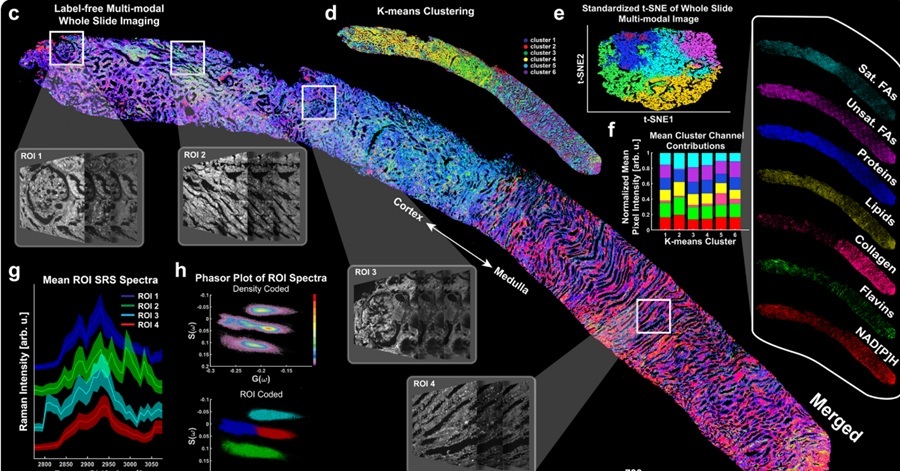New Optical Imaging Technology to Improve Diagnosis of Diabetic Kidney Disease
Posted on 22 May 2025
A team of researchers has developed a groundbreaking method to examine kidney tissues without the need for staining or causing damage to the samples. This innovative approach, known as label-free multimodal optical biopsy, produces detailed 3D images of kidney samples, uncovering early signs of disease that are often overlooked by traditional techniques.
The research team from the University of California San Diego (La Jolla, CA, USA) and Washington University School of Medicine in St. Louis (St. Louis, MO, USA) has introduced a cutting-edge imaging system that uses lasers to detect crucial changes in the kidney’s structure and chemical composition. This includes the identification of excess fat accumulation, protein modifications, and tissue scarring—early indicators of diabetic kidney disease, which is one of the leading causes of kidney failure globally. Unlike conventional biopsy methods, which require multiple serial sections, chemical staining, and often risk physical slicing defects, this label-free technique preserves the integrity of the sample while providing rich, detailed images that reflect the underlying biological processes. In situations where tissue samples are limited, this non-destructive, label-free imaging method offers the critical advantage of maintaining flexibility for future processing.

To maximize its effectiveness, the team integrated artificial intelligence to automatically identify signs of disease within the imaging data. This enhancement could potentially enable clinicians to diagnose kidney issues more quickly and accurately, and create more personalized treatment plans for each patient. The researchers aim for this technology to not only improve the early detection, monitoring, and treatment of kidney disease but also to be applied in studying other conditions where tissue structure and metabolism are crucial factors.
“Think of it as a high-tech camera that can ‘see’ inside tissue without disrupting cells or requiring stains,” said Lingyan Shi PhD, co-corresponding author of the study published in Nature Communications and professor in the Shu Chien-Gene Lay Department of Bioengineering at UC San Diego. “It gives us a more complete picture of what’s happening inside the kidney—and does it in 3D.”
“This technology has enormous potential to improve how we diagnose and monitor kidney disease, especially in its early stages when intervention can be most effective,” added Sanjay Jain MD PhD, co-corresponding author and professor of medicine, pathology and pediatrics at WashU Medicine. It provides us clues to what adjustments or adaptations are happening in the cells in diabetes and related metabolic disorders in the kidney.”
Related Links:
UC San Diego
WashU Medicine














